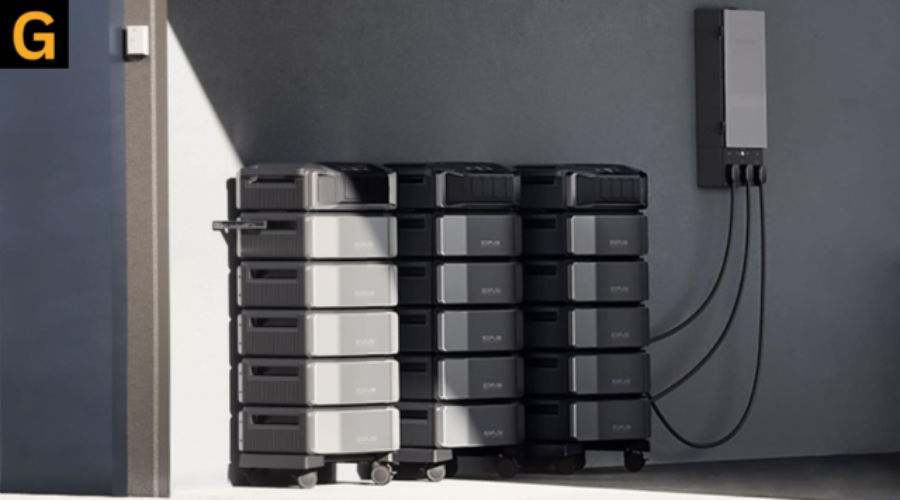Detailed Guide to LiFePO4 Voltage Chart (3.2V, 12V, 24V)
Overview of EcoFlow in the USA
EcoFlow is today a premier portable power solution firm in the USA, with an Importance on innovative products and dependable designs. Its Delta lineup, in particular, has been much welcomed for embracing LiFePO₄ batteries, thereby extending users powerful and efficient energy storage solutions. The products are designed to meet various needs, ranging from emergency backup power to powering off-grid excursions.
Table of Contents
What Is LiFePO₄ Battery Voltage?
LiFePO₄ batteries also possess some operating voltage ranges for each state of charge (SOC). These voltages must be known in order to test battery health and provide the best possible performance.
Nominal Voltage: The nominal voltage of a single LiFePO₄ cell is typically around 3.2V.
Fully Charged Voltage: When fully charged, the cell is around 3.65V.
Fully Discharged Voltage: Do not go below 2.5V to avoid possible damage.
These voltages are the building blocks to configure battery packs to desired voltages, i.e., 12V, 24V, or 48V, by concatenation of several cells in series.
LiFePO4 Voltage Chart
The LiFePO4 voltage chart is also a must-have tool to monitor the charge level and health of these batteries. Here is a simplified chart:
| State of Charge | 12V | 24V | 48V |
| 100% Charging | 14.6V | 29.2V | 58.4V |
| 100% Rest | 13.6V | 27.2V | 54.4V |
| 90% | 13.4V | 26.8V | 53.6V |
| 80% | 13.3V | 26.6V | 53.2V |
| 70% | 13.2V | 26.4V | 52.8V |
| 60% | 13.1V | 26.2V | 52.4V |
| 50% | 13.0V | 26.0V | 52.0V |
| 40% | 12.9V | 25.8V | 51.6V |
| 30% | 12.8V | 25.6V | 51.2V |
| 20% | 12.5V | 25.0V | 50.0V |
| 10% | 12.0V | 24.0V | 48.0V |
| 0% | 10.0V | 20.0V | 40.0V |
LiFePO₄ Battery Charging & Discharging in the USA
Charging and discharging according to the proper practices are necessary in order to maintain LiFePO₄ batteries healthy and prolong their life. The practices mentioned below are typically applicable:
Charging Parameters
| Parameter | 3.2V Cell | 12V (4S) | 24V (8S) |
| Charging Voltage | 3.65V | 14.6V | 29.2V |
| Float Voltage | 3.40V | 13.6V | 27.2V |
| Maximum Discharge Voltage | 3.65V | 14.6V | 29.2V |
| Minimum Discharge Voltage | 2.5V | 10.0V | 20.0V |
| Nominal Voltage | 3.2V | 12.8V | 25.6V |
Discharging Parameters
| Parameter | 3.2V Cell | 12V (4S) | 24V (8S) |
| Standard Discharge Rate | 0.5C | 0.5C | 0.5C |
| Maximum Discharge Rate | 1C | 1C | 1C |
| Cut-off Voltage | 2.5V | 10.0V | 20.0V |
C-rate refers to charge or discharge current in relation to the battery capability.
For instance, 1C rate of a battery whose capacity is 100Ah will be 100A.
How Does Voltage Influence LiFePO4 Battery Performance?
Voltage is generally critical in the case of operating LiFePO4 batteries. Keeping within the given voltage range guarantees optimum delivery of power and battery longevity. Overcharging can result in lower efficiency and lifespan. One must watch for voltage levels when charging and discharging to avoid damage.
How To Avoid Degradation of a LiFePO₄ Battery
Avoid Overcharging: Keep the battery within the recommended voltage level.
Monitor Temperature: High or low temperatures can be detrimental to battery health.
Routine Maintenance: Check for physical injury and clean terminals on a routine basis.
Store Properly: Store batteries in a cool, dry place when not in use.
Avoid Deep Discharge: Attempt to have the battery maintained above 20% if possible.
Benefits of LiFePO4 Batteries in Solar Generators
LiFePO4 batteries are suitable for application in solar generators because they are safe, efficient, and long-lasting. They have a long cycle life, which implies that they can be charged and discharged for numerous cycles without losing their capacity. Thus, they provide a cost-effective solution for application in off-grid solar systems.
Advantages of LiFePO4 Batteries
Safety: LiFePO4 batteries are less prone to overheating and thermal runaway than other lithium-ion batteries.
Long Cycle Life: They support 3,000 charge cycles, which is ideal for long-term applications.
Environmental Benefits: They have no toxic heavy metals such as lead or cadmium, minimizing environmental degradation.
Conclusion
Overall, Lithium Iron Phosphate batteries are a good option for solar generators and off-grid solar systems, providing safety, efficiency, and reliability. Knowing their charging parameters and voltage charts is essential to optimize their performance and lifespan. Regardless of where you use them, in the Delta series or other solar generators, LiFePO4 batteries are an eco-friendly, cost-effective energy storage solution.
Frequently Asked Question
Q1.What is the nominal voltage of a LiFePO4 cell?
The nominal voltage is 3.2V per cell.
Q2.How are LiFePO4 batteries used in off-grid solar installations?
They efficiently store energy in solar generators and off-grid solar installations.
Q3.Are LiFePO4 batteries suitable for use with the Delta series?
Yes, they are largely employed in the EcoFlow’s Delta series as they are effective and safe to use.
Q4.What is the max charge voltage of a 12V LiFePO4 battery?
The maximum charge voltage commonly ranges from 14.6V.
Q5.In what way do voltage levels contribute to the life of LiFePO4 batteries?
It is important to keep the correct voltage range to maximize battery life.
Q6.Are LiFePO4 batteries ideal for solar generators?
Yes, they are perfect for solar generators because they are efficient and durable.
Q7.Can LiFePO4 batteries be fast-charged?
Yes, but one should stick to recommended charging parameters.
Q8.Do LiFePO4 batteries need maintenance?
They need minimal or no maintenance, but occasional checks can prolong their lifespan.



